65 start with D start with D

Rivers are one of nature’s most vital energy sources, and their power can be efficiently harnessed through the construction of dams. But now dams have become a controversial engine in the race toward technological advancement, so much so that the World Commission on Dams convened in 1998 to debate the issue. Are dams a help to society or an agent of environmental destruction? Trevor Turpin explores the answers to that question here in his comprehensive historical chronicle.
Among the most amazing feats of human engineering, a dam can sustain societies in a multitude of ways, as 40,000 of them around the world provide such things as electricity, water for farms and cities, and canals for boat navigation. Turpin traces their development, design, and consequences from the Industrial Revolution to now, examining edifices in China, Las Vegas, and places in between. The often contentious debate between environmentalists, architects, and engineers, Dam shows, is a complex one that pits the benefits of dams against the long-term ecological health of nations.
Neither a polemic against dams nor a defense of their proliferation, Dam offers a judicious and in-depth account of this cornerstone of our modern age.

Numerous books have attempted to chronicle the life of Dante Alighieri, yet essential questions remain unanswered. How did a self-taught Florentine become the celebrated author of the Divine Comedy? Was his exile from Florence so extraordinary? How did Dante make himself the main protagonist in his works, in a literary context that advised against it? And why has his life interested so many readers? In Dante’s New Lives, eminent scholars Elisa Brilli and Giuliano Milani answer these questions and many more. Their account reappraises Dante’s life and work by assessing archival and literary evidence and examining the most recent scholarship. The book is a model of interdisciplinary biography, as fascinating as it is rigorous.

In this wide-ranging and compelling study, Curtis demonstrates how the claustrophobic interiors of haunted spaces in films connect to the ‘dark places’ of the human psyche. He examines diverse topics such as the special effects – ranging from crude to state-of-the-art – used in movies to evoke supernatural creatures; the structures, projections and architecture of horror movie sets; and ghosts as symbols of loss, amnesia, injustice and vengeance. Dark Places also examines the reconfiguration of the haunted house in film as a motel, an apartment, a road or a spaceship, and how these re-imagined spaces thematically connect to Gothic fictions.
Curtis draws his examples from numerous iconic films – including Nosferatu, Psycho, The Texas Chainsaw Massacre and The Shining – as well as lesser-known international works, which allow him to consider different cultural ideas of ‘haunting’. Japanese horror films and their Hollywood remakes – such as Ringu and The Ring, or Juon and The Grudge – come under particular scrutiny, as he explores Japanese cinema’s preoccupation with malevolent forces from the past.
Whether you love the splatter of blood or prefer to hide under the couch, Dark Places cuts to the heart of why we are drawn to carnage.
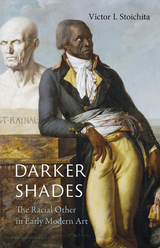

In this book, Nina Edwards explores darkness as both a physical feature and cultural image, through themes of sight, blindness, consciousness, dreams, fear of the dark, night blindness, and the in-between states of dusk or fog, twilight and dawn, those points or periods of obscuration and clarification. Taking us across the ages, from the dungeons of Gothic novels to the concrete bunkers of Nordic Noir TV shows, Edwards interrogates the full sweep of humanity’s attempts to harness and suppress the dark first through our ability to control fire and, later, illuminate the world with electricity. She explores how the idea of darkness pervades art, literature, religion, and our everyday language. Ultimately, Edwards reveals how darkness, whether a shifting concept or palpable physical presence, has fed our imaginations.

In Dates, Nawal Nasrallah draws on her experience of growing up in the lands of ancient Mesopotamia, where the date palm was first cultivated, to explore the history behind the fruit. Dates have an important role in their arid homeland of the Middle East, where they are a dietary staple and can be consumed fresh or dried, as a snack or a dessert, and are even thought to have aphrodisiac qualities.
In this history, Nasrallah describes the central role the date palm has played in the economy of the Middle East. This informative account of the date palm’s story follows its journey from its land of origin to the far-flung regions where it is cultivated today. Along the way, Nasrallah weaves many fascinating and humorous anecdotes that explore the etymology, history, culture, religion, myths, and legends surrounding dates. For example, she explains how the tree came to be a symbol of the Tree of Life and associated with the fiery phoenix bird, the famous ancient goddess Ishtar, and the moon, and how the medjool date acquired its name.
This delightful and unusual book is generously illustrated with many beautiful images, and supplemented with more than a dozen delicious date recipes for savory dishes, sweets, and wine.
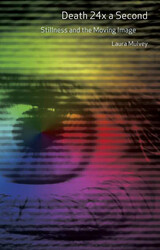
According to Mulvey, new media technologies give viewers the ability to control both image and story, so that movies meant to be seen collectively and followed in a linear fashion may be manipulated to contain unexpected and even unintended pleasures. The individual frame, the projected film’s best-kept secret, can now be revealed by anyone who hits pause. Easy access to repetition, slow motion, and the freeze-frame, Mulvey argues, may shift the spectator’s pleasure to a fetishistic rather than a voyeuristic investment in film.
By exploring how technology can give new life to old cinema, Death 24x a Second offers an original reevaluation of film’s history and its historical usefulness.
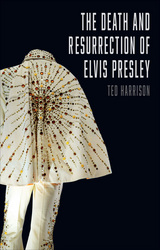
Harrison begins, of course, in pilgrimage: to Graceland. He shows how Elvis’s estate was pillaged nearly to ruin by his manager but was saved through the deft business acumen and financial vision of his divorced wife, one Priscilla Presley. If Graceland seems holy, that’s because it is: Harrison unveils in Elvis’s allure a deeply spiritual dimension, showing how Elvis fans, over the decades, have anointed their idol with Christ-like qualities. Through Elvis’s extravagance, Harrison raises fascinating links between money and faith, and through Elvis’s life, he shows how the King actually fulfilled a host of roles ranging from hero to martyr to saint. Underpinning the whole story is Elvis’s extraordinary charisma and—lest we forget—his astonishing musical genius.
Fascinating, colorful, and deeply informative, this book is a must-have for any fan, anyone who was ever lucky enough to see Elvis alive or who hopes they might still be able to.

Brilliant examines the ways that an individual’s ethos can live on long after the biological body perishes. It does so through the collective memories of survivors, being passed down to subsequent generations. Such “remainings” are created by rituals and reinforced through commemorations and obituaries and projected through art and architecture. These powerful inducements to remember counter the finality of physical death, bridging the gap between absence and presence. Weaving together a rich collection of texts and images and guiding them with deeply meaningful insights, Brilliant offers a reflective meditation on the methods that artists, architects, and writers have developed to activate memory and animate their subjects into robust afterlife. In this way, he shows, death need no longer be seen as a terminal departure but rather a transformation into a new form of existence, one carried on by the communion of others.

During the 1890s, British women for the first time began to leave their family homes to seek work, accommodation, and financial and sexual freedom. Decadent Women is an account of some of these women who wrote for the innovative art and literary journal The Yellow Book. For the first time, and drawing on original research, Jad Adams describes the lives and work of these vibrant and passionate women, from well-connected and fashionable aristocrats to the desperately poor. He narrates the challenges they faced in a literary marketplace, and within a society that overwhelmingly favored men, showing how they were pioneers of a new style, living lives of lurid adventure and romance, as well as experiencing poverty, squalor, disease, and unwanted pregnancy.
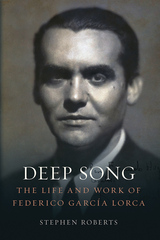
But Lorca’s fame could not survive politics: his identification with the splendor of the Second Spanish Republic (1931–36) was one of the reasons behind Lorca’s murder in August 1936 at the hands of right-wing insurgents at the start of the Spanish Civil War. In this biography, Stephen Roberts seeks out the roots of the man and his work in the places in which Lorca lived and died: the Granadan countryside where he spent his childhood; the Granada and Madrid of the 1910s, ’20s, and ’30s where he received his education and achieved success as a writer; his influential visits to Catalonia, New York, Cuba, and Argentina; and the mountains outside Granada where his body still lies in an undiscovered grave. What emerges is a fascinating portrait of a complex and brilliant man as well as new insight into the works that helped to make his name.
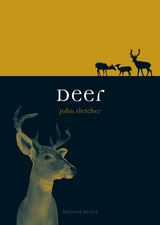

Ludmilla Jordanova's lucid text reflects on the nature of the relationship between art, science, medicine and technology by focusing on a selection of portraits that spans more than three centuries. Illustrated with likenesses of such notable personalities as Edward Jenner, Marie Curie, Charles Darwin, Albert Einstein and Dorothy Hodgkin, and encompassing a variety of media from paintings and medals to bookmarks and key rings, Defining Features charts changing attitudes towards medical practice and scientific investigation, as well as exploring how notions of gender, heroism, popularization and celebrity have affected the public's understanding of how researchers do their work.

This is the first book in English to trace the history of the food of Spain from antiquity to the present day. From the use of pork fat and olive oil to the Spanish passion for eggplants and pomegranates, María José Sevilla skillfully weaves together the history of Spanish cuisine, the circumstances affecting its development and characteristics, and the country’s changing relationship to food and cookery.


Often called the father of modern philosophy, René Descartes set the intellectual agenda for seventeenth-century philosophy, mathematics, natural science, and beyond. In this critical biography, based on compelling new research, Steven Nadler follows Descartes from his early education in France to the Dutch Republic, where he lived most of his adult life, to his final months as a tutor to Queen Christina of Sweden. Along the way, Nadler shows how Descartes renewed philosophy by transforming fundamental assumptions about the cosmos, natural world, and human nature as well as how his work continues to generate new insights into many of the metaphysical and epistemological problems that engage philosophers today.

Drawing on archeological evidence that reveals the emergence of a culturally distinct human occupation of the region up to 10,000 years ago, Vu Hong Lien and Peter D. Sharrock show that these early societies had a sophisticated agricultural and technological culture much earlier than previously imagined. They explore the great variety of cultures that have existed in this territory, unshackling them from the confined histories of outsiders, imperial invaders, and occupiers in order to show that the country has been central to the cultural, political, and ethnic development of Southeast Asia for millennia. Unrivaled in scope, this comprehensive account will be the definitive history of the Vietnamese people, their culture, and their nation.

Covering an immense geographical range, Michael Welland wanders from the Sahara to the Atacama, depicting the often bizarre adaptations of plants and animals to these hostile environments. He also looks at these seemingly infertile landscapes in the context of their place in history—as the birthplaces not only of critical evolutionary adaptations, civilizations, and social progress, but also of ideologies. Telling the stories of the diverse peoples who call the desert home, he describes how people have survived there, their contributions to agricultural development, and their emphasis on water and its scarcity. He also delves into the allure of deserts and how they have been used in literature and film and their influence on fashion, art, and architecture. As Welland reveals, deserts may be difficult to define, but they play an active role in the evolution of our global climate and society at large, and their future is of the utmost importance. Entertaining, informative, and surprising, The Desert is an intriguing new look at these seemingly harsh and inhospitable landscapes.

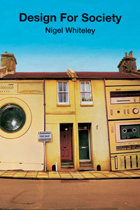
Design for Society is not an anti-design book; rather, it is an anti-consumerist-design book, in that it reveals what most people would agree are the socially and ecologically unsound values and unsatisfactory implications on which the system of consumerist design is constructed. In so doing, it prepares the ground for a more responsible and just type of design.

British culture is marked by indelible icons—red double-decker buses, large oak wardrobes, and the compact sleekness of the Mini. But British industrial and product design have long lived in the shadows of architecture and fashion. Cheryl Buckley here delves into the history of British design culture, and in doing so uniquely tracks the evolution of the British national identity.
Designing Modern Britain demonstrates how interior design, ceramics, textiles, and furniture craft of the twentieth century contain numerous hallmark examples of British design. The book explores topics connected to the British design aesthetic, including the spread of international modernism, the eco-conscious designs of the 1980s and 1990s, and the influence of celebrity product designers and their labels. Buckley also investigates popular nostalgia in recent times, considering how museum and gallery exhibitions have been instrumental in reimagining Britain’s past and how the heritage industry has fueled a growing trend among designers of employing images of British culture in their work.

Designing Modern Germany reveals how German attitudes toward national identity, modernity and technology are crucial to understanding German design. Aynsley traces the historical development of German design, beginning in the 1870s with the first dedicated Arts and Crafts schools and stretching through to the famous institutions of the Bauhaus and the Ulm Hochschule für Gestaltung. He analyses the works of leading figures such as Peter Behrens and Hannes Meyer, through to Ingo Maurer and Jil Sander, and many others in design specialties including graphics, industrial and furniture design, fashion and architecture. He also offers the first consideration of the contrasting design traditions of East and West Germany between 1949 and 1989. Whether examining the pre-First World War department store, the National Socialist fashion system or East Germany’s official design culture, Designing Modern Germany reveals that German design significantly affected citizens’ daily lives.
An essential read for designers and scholars of German design and history, Designing Modern Germany is a key text for understanding Germany’s major contribution to twentieth-century design.

From cars to cameras, design from Japan is ubiquitous. So are perceptions of Japanese design, from calming, carefully crafted minimalism to avant-garde catwalk fashion, or the cute, Kawaii aesthetic populating Tokyo streets. But these portrayals overlook the creativity, generosity, and sheer hard work that has gone into creating and maintaining design industries in Japan.
In Designing Modern Japan, Sarah Teasley deftly weaves together the personal stories of people who shaped and shape Japan’s design industries with social history, economic conditions, and geopolitics.. Key to her account is how design has been a strategy to help communities thrive during turbulent times, and for making life better along the way. Deeply researched and superbly illustrated, Designing Modern Japan appeals to a wide audience for Japanese design, history, and culture.
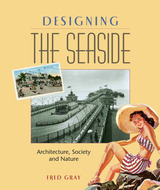
Surprisingly, the common notion of taking a seaside vacation has only existed since the eighteenth century, with a growing acceptance of the idea that fresh air and sea water are good for one’s health. Since then, seaside resorts for all budgets have sprung up around the world. In Designing the Seaside, Fred Gray offers a richly illustrated history of seaside architecture and culture, from the smallest beach hut to the grandest hotels. Through over 400 illustrations that include historic photographs, pamphlets, guidebooks, postcards, and posters, Gray explores the changing attitudes toward shoreline vacations.
“Designing the Seaside manages to be both scholarly and colorful and offers a timely history of seaside art and architecture, from Brighton Pier and beach huts in Nice to a derelict resort complex in the Baltic, to the bizarre Palm islands of Dubai.”—London Evening Standard
“Filled with photographs, architectural drawings, guidebooks, postcards and posters, this book explores changing attitudes to holidays and their settings. . . . There is an exploration of how the seaside became a hotbed for issues of morality, where people took their sauce on a postcard as often as with their fish and chips.”—Daily Telegraph
“Gray’s illuminating study of the history of seaside architecture shows what a profound influence many of the innovations born on British coasts have had on Western holiday ideals.”—Metro London

Yet, as Jeri Quinzio reveals, while everyone has a taste for sweetness, not every culture enjoys a dessert course at the end of the meal. And desserts as we know them—the light sponge cakes of The Great British Baking Show, the ice creams, the steamed plum puddings—are neither as old nor as ubiquitous as many of us believe. Tracing the history of desserts and the way they, and the course itself, have evolved over time, Quinzio begins before dessert was a separate course—when sweets and savories were mixed on the table—and concludes in the present, when homey desserts are enjoying a revival, and as molecular gastronomists are creating desserts an alchemist would envy.
An indulgent, mouth-wateringly illustrated read featuring recipes; texts from chefs, writers, and diarists; and extracts (not the vanilla or almond variety) from cookbooks, menus, newspapers, and magazines, Dessert is a delectable happy ending for anyone with a curious mind—and an incorrigible sweet tooth.
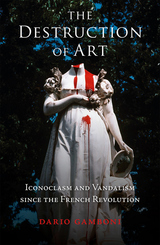
Last winter, a man tried to break Marcel Duchamp’s Fountain sculpture. The sculpted foot of Michelangelo’s David was damaged in 1991 by a purportedly mentally ill artist. With each incident, intellectuals must confront the unsettling dynamic between destruction and art. Renowned art historian Dario Gamboni is the first to tackle this weighty issue in depth, exploring specters of censorship, iconoclasm, and vandalism that surround such acts.
Gamboni uncovers here a disquieting phenomenon that still thrives today worldwide. As he demonstrates through analyses of incidents occurring in nineteenth- and twentieth-century America and Europe, a complex relationship exists among the evolution of modern art, destruction of artworks, and the long history of iconoclasm. From the controversial removal of Richard Serra’s Tilted Arc from New York City’s Federal Plaza to suffragette protests at London’s National Gallery, Gamboni probes the concept of artist’s rights, the power of political protest and how iconoclasm sheds light on society’s relationship to art and material culture.
Compelling and thought-provoking, The Destruction of Art forces us to rethink the ways that we interact with art and react to its power to shock or subdue.

A decimated Shiite shrine in Iraq. The smoking World Trade Center site. The scorched cityscape of 1945 Dresden. Among the most indelible scars left by war is the destroyed landscapes, and such architectural devastation damages far more than mere buildings. Robert Bevan argues herethat shattered buildings are not merely “collateral damage,” but rather calculated acts of cultural annihilation.
From Hitler’s Kristallnacht to the toppling of Saddam Hussein’s statue in the Iraq War, Bevan deftly sifts through military campaigns and their tactics throughout history, and analyzes the cultural impact and catastrophic consequences of architectural destruction. For Bevan, these actions are nothing less than cultural genocide. Ultimately, Bevan forcefully argues for the prosecution of nations that purposely flout established international treaties against destroyed architecture.
A passionate and thought-provoking cri de coeur, The Destruction of Memory raises questions about the costs of war that run deeper than blood and money.
“The idea of a global inheritance seems to have fallen by the wayside and lessons that should have long ago been learned are still being recklessly disregarded. This is what makes Bevan’s book relevant, even urgent: much of the destruction of which it speaks is still under way.”—Financial Times Magazine
“The message of Robert Bevan’s devastating book is that war is about killing cultures, identities and memories as much as it is about killing people and occupying territory.”—Sunday Times
“As Bevan’s fascinating, melancholy book shows, symbolic buildings have long been targeted in and out of war as a particular kind of mnemonic violence against those to whom they are special.”—The Guardian

Bevan combs through world history to highlight a range of wars and conflicts in which the destruction of architecture was pivotal. From Cortez’s razing of Aztec cities to the carpet bombings of Dresden and Tokyo in World War II to the war in the former Yugoslavia, The Destruction of Memory exposes the cultural war that rages behind architectural annihilation, revealing that in this subliminal assault lies the complex aim of exterminating a people. He provocatively argues for “the fatally intertwined experience of genocide and cultural genocide,” ultimately proposing the elevation of cultural genocide from “collateral damage” to a crime punishable by international law.

"as comprehensive a guide as anyone could wish to the appearances of the Evil One in art and literature throughout the age."—The Herald


On January 3, 1911, police discovered Latvian revolutionaries on the lam in London’s East End. A six-hour gunfight ensued until fire consumed the building where the radicals had taken refuge. When a not-yet-prime-minister Winston Churchill arrived at the scene, he ordered officials to let the fire run its course. At least two people burned to death in the blaze, but the Latvian ringleader, Peter the Painter, remained at large. Known as the Siege of Sidney Street, the event was a nationwide sensation and ignited fierce debates about immigration, extremism, and law enforcement. This book unravels the full story of the siege, the Latvian expatriates, and London’s vibrant anarchist movement in the early twentieth century.

Invented in France in 1860, barbed wire was developed independently in the USA, where it was used to control livestock on the Great Plains, both to "keep out" and "keep in". Promoted as the Ideal Fence, barbed wire’s menacing qualities were soon made manifest. The epithet, "The Devil’s Rope", anticipated its transformation into a tool of war in the late 19th and early 20th century. Henceforth, it would become synonymous with repression. Barbed wire’s conflicting character makes it an appropriate symbol of modernity, and Krell shows how the use of this symbolism in contemporary art has given barbed wire meanings beyond the historical and political realms.
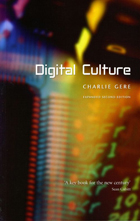
In this revised and expanded second edition, taking account of new developments such as Facebook and the iPhone, Charlie Gere charts in detail the history of digital culture, as marked by responses to digital technology in art, music, design, film, literature and other areas. After tracing the historical development of digital culture, Gere argues that it is actually neither radically new nor technologically driven: digital culture has its roots in the eighteenth century and the digital mediascape we swim in today was originally inspired by informational needs arising from industrial capitalism, contemporary warfare and counter-cultural experimentation, among other social changes.
A timely and cutting-edge investigation of our contemporary social infrastructures, Digital Culture is essential reading for all those concerned about the ever-changing future of our Digital Age.
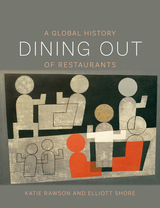
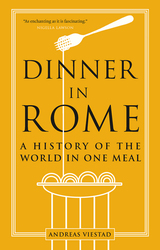
“There is more history in a bowl of pasta than in the Colosseum,” writes Andreas Viestad in Dinner in Rome. From the table of a classic Roman restaurant, Viestad takes us on a fascinating culinary exploration of the Eternal City and global civilization. Food, he argues, is history’s secret driving force. Viestad finds deeper meanings in his meal: He uses the bread that begins his dinner to trace the origins of wheat and its role in Rome’s rise as well as its downfall. With his fried artichoke antipasto, he explains olive oil’s part in the religious conflict of sixteenth-century Europe. And, from his sorbet dessert, he recounts how lemons featured in the history of the Mafia in the nineteenth century and how the hunger for sugar fueled the slave trade. Viestad’s dinner may be local, but his story is universal. His “culinary archaeology” is an entertaining, flavorful journey across the dinner table and time. Readers will never look at spaghetti carbonara the same way again.
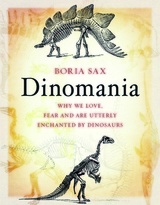
In Dinomania, Boria Sax, a leading authority on human-animal relations, tells the story of our unlikely romance with the titanic saurians, from the discovery of their enormous bones—relics of an ancient world—to the dinosaur theme parks of today. That discovery, around the start of the nineteenth century, was intimately tied to our growing awareness of geological time and the dawn of the industrial era. Dinosaurs’ vast size and power called to mind railroads, battleships, and factories, making them, paradoxically, emblems of modernity. But at the same time, their world was nature at its most pristine and unsullied, the perfect symbol of childhood innocence and wonder. Sax concludes that in our imaginations dinosaurs essentially are, and always have been, dragons; and as we enter a new era of environmental threats in which dinos provide us a way to confront indirectly the possibility of human extinction, their representation is again blending with the myth and legend from which it emerged at the start of the modern age.
Fun and ferocious, and featuring many superb illustrations of dinosaurs from art, popular culture, film, and advertising, Dinomania is a thought-provoking homage to humanity's enduring dinosaur amour.

This is the tale of how Hollywood, inspired by the success of Easy Rider, sold a cycle of films as the new dirty real. Dennis Hopper, Peter Fonda, Monte Hellman, Jack Nicholson, Kris Kristofferson, and Sam Peckinpah, among others, parlayed a nostalgia for the gutter and donned bohemian personae, pulling on soiled shirts and scuffed boots to better counter the glamour and phoniness of Tinseltown. The result was a generation of movies, including The Hired Hand, Five Easy Pieces, Two-Lane Blacktop, The Last Picture Show, and Pat Garrett and Billy the Kid. With great care for the historical record and displaying a refined critical acuity, Peter Stanfield captures that pivotal moment when Hollywood tried to sell a begrimed vision of itself to the world.

Disgrace is the first truly global history of sexual violence. The book explores how sexual violence varies widely across time and place, from nineteenth-century peasant women in Ireland who were abducted as a way of forcing marriage, to date-raped high-school students in twentieth-century America, and from girls and women violated by Russian soldiers in 1945 to Dalit women raped by men of higher castes today. It delves into the factors that facilitate violence—including institutions, ideologies, and practices—but also gives voice to survivors and activists, drawing inspiration from their struggles. Ultimately, Joanna Bourke intends to forge a transnational feminism that will promote a more harmonious, equal, and rape- and violence-free world.
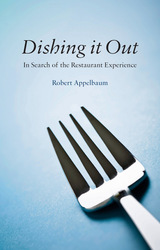

Each chapter explores a different facet of the war and masculinity in depth. Joanna Bourke discovers that those who were dismembered and disabled by the war were not viewed as passive or weak, like their civilian counterparts, but were the focus of much government and public sentiment. Those suffering from disease were viewed differently, often finding themselves accused of malingering.
Joanna Bourke argues convincingly that military experiences led to a greater sharing of gender identities between men of different classes and ages. Dismembering the Male concludes that ultimately, attempts to reconstruct a new type of masculinity failed as the threat of another war, and with it the sacrifice of a new generation of men, intensified.

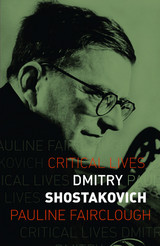
Pauline Fairclough’s absorbing new biography offers a vivid portrait of Shostakovich. Featuring quotations from previously unpublished letters as well as rarely seen photographs, Fairclough’s book provides fresh insight into the music and life of a composer whose legacy, above all, was to have written some of the greatest and most cherished music of the last century.

This book unravels the debate about whether dogs are descended from wolves, and moves on to deal with canines in mythology, religion and health, dog cults in ancient and medieval civilizations as disparate as Alaska, Greece, Peru and Persia, and traces correspondences between the histories of dogs in the Far East, Europe, Africa and the Americas. Dog also examines the relatively recent phenomenon of dog breeding and the invention of species, as well as the canine’s role in science fact and fiction; from Laika, the first astronaut, and Pavlov’s famous conditioned dogs, through to science fiction novels and cult films such as A Boy and his Dog.
Susan McHugh shows how dogs today contribute to human lives in a huge number of ways, not only as pets and guide dogs but also as sources of food in Asia, entertainment workers, and scientific and religious objects. Dog reveals how we have shaped these animals over the millennia, and in turn, how dogs have shaped us.
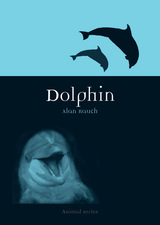
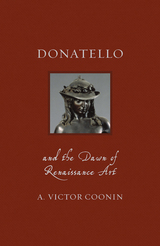
In this beautifully illustrated book—the first thorough biography of Donatello in twenty-five years—A. Victor Coonin describes the full extent of Donatello’s revolutionary contributions, revealing how his work heralded the emergence of modern art.
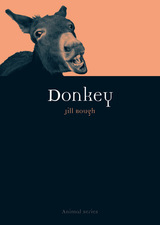
Though donkeys have historically been among our most useful domesticated animals—from plowing fields to navigating difficult terrain—they have been much maligned in popular culture and given very little respect. So much so, that their perceived qualities of stupidity and stubbornness have made their way into the language of insult. But in Donkey, Jill Bough champions this humble creature, proving that after 10,000 years of domestication, this incredibly hard-working animal deserves our appreciation.
Bough reveals the animal’s historic significance in Ancient Egypt, where it was once highly regarded—even worshipped. However, this elevated status did not endure in Ancient Greece and Rome, where donkeys were denigrated, ridiculed, and abused. Since that time, donkeys have continued to be associated with the poorest and most marginalized in human societies. All that time and all over the world, donkeys continue to be used for innumerable tasks, and even today, donkeys are considered to be one of the best draught animals in developing nations, where they continue to make a vital contribution. Bough rounds out her account with a look at the variety of social, cultural, and religious meanings that donkeys have embodied, especially in literature and art.
With accounts that are both fascinating and touching, this cultural history of the donkey will inspire a new respect and admiration for this essential creature.

Why is doping a perennial problem for sports? Is this solely a contemporary phenomenon? And should doping always be regarded as cheating, or do today’s anti-doping measures go too far?
Drawing on case studies from the early twentieth century to the present day, Doping: A Sporting History explores why the current anti-doping system looks as it does, charting its origins to the founding of the modern Olympic Games. From interwar notions of sporting purity to the postwar stimulant crisis, what seemed an easily resolvable problem soon became an impossible challenge as the pharmacology improved, the policy system stuttered, and Cold War politics allowed doping to flourish. The late twentieth century saw the creation of the World Anti-Doping Agency, but has the intensity of these global measures led to unintended harms?
From the cyclist Tommy Simpson who died in 1967 on Mont Ventoux with amphetamines in his jersey to Team Russia’s expulsion from the 2018 Winter Olympics, Doping: A Sporting History is a gripping, provocative account that ultimately proposes a new approach: one for the inclusion and protection of athletes themselves.
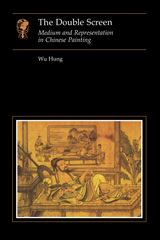
This book contemplates a large problem: what is a traditional Chinese painting? Wu Hung answers this question through a comprehensive analysis of the screen, a major format and a popular pictorial motif in traditional China. With a broad array of examples ranging from the early centuries C.E. to the 1800s, he explores the screen’s position in art – as an important site for artistic imagination, as an illusionary representation on a flat surface, and as an architectural device defining cultural conventions. A screen occupies a space and divides it, supplies an ideal surface for painting, and has been a favourite pictorial image in Chinese art since antiquity. With its diverse roles, the screen has provided Chinese painters with endless opportunities to reinvent their art.
The author argues that any understanding of Chinese painting must include discussion of its material forms as well as its intimate connection with cultural context and convention. Thus, The Double Screen offers a powerful non-western perspective on diverse artistic and cultural genres, from portraiture and pictorial narrative to voyeurism and masquerade, and will be invaluable to anyone interested in the history of art and Asian studies as well as to students and specialists in the field.


Down with the Crown seeks to fill this gap and to modify assumptions about the failure of radicals to contest monarchy effectively by looking at the issue of anti-monarchism in British politics from the French Revolution to the death of Diana, Princess of Wales. It also deals with debates about the House of Lords and with the republican movements in former colonies such as Australia. At a time when European integration, devolution in Wales and Scotland, and reform of the House of Lords are forcing Britain to take stock of its governing institutions, this book represents a significant contribution to the debates surrounding the House of Windsor.

In this fiery cultural history, Martin Arnold asks how these unifying impulses can be explained. Are they owed to our need to impose order on chaos in the form of a dragon-slaying hero? Is it our terror of nature, writ large, unleashed in its most destructive form? Or is the dragon nothing less than an expression of that greatest and most disturbing mystery of all: our mortality? Tracing the history of ideas about dragons from the earliest of times to Game of Thrones, Arnold explores exactly what it might be that calls forth such creatures from the darkest corners of our collective imagination.
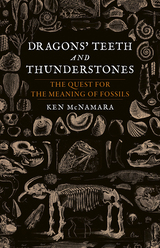
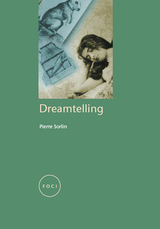
In Dreamtelling, Pierre Sorlin does not deal with our nocturnal visions per se, but rather with what we say regarding them. He explores the influence of dreams on our imaginations, and the various – sometimes inconsistent, always imperfect – theories people have contrived to elucidate them. Sorlin shows how our accounts are built on recurrent patterns, but are also totally and entirely individual. He examines the urge to analyze night visions and why it is that some people have become experts in dream interpretation.
Many books have been published on the nature of dreams, on their psychological or biological origins and on their significance, but this book takes as its premise that all we can allege about nocturnal visions is based on dreamtelling. Sorlin shows how dreams arouse our creativity and how, in turn, our creativity influences our dream accounts. Dreamtelling is aimed at all those who not only dream, but are curious about the experience, and wonder why they feel compelled to analyze and recount their night visions.
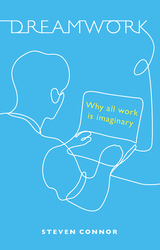
Dreamwork is a book about the ideas, dreams, dreads, and ideals we have about work. Its central argument is this: Although we depend on the idea of work for our identity as humans, we feel we must disguise from ourselves the fact that we do not know what work is. There is no example of work that nobody might, under some circumstances, do for fun. All work is imaginary—which is not to say that it is simply illusory, but rather that, to count as work, it must be imagined to be work. In other words, a large part of what we mean by working is this work of imagining. Work is therefore essentially mystical—just the opposite of what it is taken to be by all of us spending our days at desks, behind cash registers, and in factories. Delving into this complex mythos, Dreamwork looks in turn at worries about whether or not work is hard; the importance of places of work; the meanings of hobbies, holidays, and sabbaths; and the history of dreams of redeeming work.
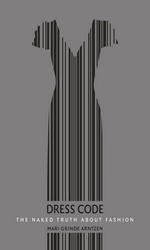
Arntzen guides us through the major figures and brands of today’s fashion industry, showing how they shape us and in turn why we love to be shaped by them. She examines both everyday, affordable “fast fashion” brands, as well as the luxury market, to show how fashion commands a powerful influence on every socioeconomic level of our society. Stepping into our closets with us, she thinks about what happens when we get dressed: why fashion can make us feel powerful, beautiful, and original at the same time that it forces us into conformity. Stripping off the layers of the world’s fifth largest industry, garment by garment, she holds fashion up as a phenomenon, business, and art, exploring the questions it forces us to ask about the body, image, celebrity, and self-obsession.
Ultimately, Arntzen asks the most direct question: what is fashion? How has it taken such a powerful hold on the world, forever propelling us toward its concepts of beauty?

Pierrot, Little Bo Peep, cowboy: these characters and many more form part of this colorful story of dressing up, from the accession of Queen Victoria to the coronation of Queen Elizabeth II. During this time, fancy dress became a regular part of people’s social lives, and the craze for it spread across Britain and the Empire, reaching every level of society. Spectacular and witty costumes appeared at suburban street carnivals, victory celebrations, fire festivals, missionary bazaars, and the extravagant balls of the wealthy. From the Victorian middle classes performing “living statues” to squads of Shetland men donning traditional fancy dress and setting fire to a Viking ship at the annual Up Helly Aa celebration, this lavishly illustrated book provides a unique view into the quirky, wonderful world of fancy dress.
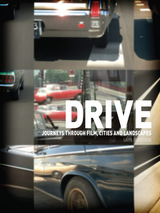
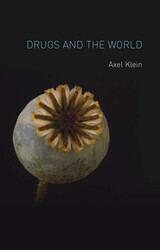
To be properly understood, drugs should not be simply examined from a negative point of view, Klein argues. From their centrality in religious rituals to their part in the growth of trade among nation-states, Klein reveals the pivotal role that drugs have played in the advancement of human society. Klein then investigates the modern policies that define certain substances as drugs; the link between drugs, addiction, and crime; and the legal strategies and policies around the world that have largely failed to control global drug trafficking. The book also draws upon studies from the Caribbean, West Africa and Eastern Europe to propose solutions that could reinforce the eroded power of state institutions, law enforcement, and the democratic process in addressing drug trafficking.
A timely and in-depth analysis, Drugs and the World offers an expertly written examination that will be essential for all those concerned with the role of drugs in the modern world.

Duchamp's two great preoccupations were the nature of scientific truth and a feeling for love with its natural limit, death. His works all speak of eroticism in a way that pushes the socially acceptable to its outer limits. Juan Antonio Ramirez addresses such questions as the meaning of the artist's ground-breaking ready-mades and his famous installation Etant donnés; his passionate essay reproduces all of Duchamp's important works, in addition to numerous previously unpublished visual sources. Duchamp: Love and Death, even is a seminal monograph for understanding this crucial figure of modern art.

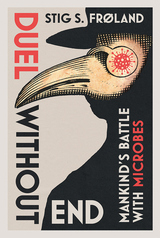
In this panoramic and up-to-date account, we learn how the Black Death, smallpox, the 1918 influenza pandemic, and other great epidemics have not only led to enormous suffering and mass death but have also contributed to the fall of empires and changed the course of history. We also discover how new infectious diseases such as HIV/AIDS and COVID-19 emerge—and how we wage war against them.
Humanity has struck back at the microbes: antibiotics and new vaccines have saved millions of lives. But the battle with these relentless, silent enemies is far from won. We face increasing threats from new and unavoidable pandemics, antibiotic resistance, and even potential extraterrestrial microbes. Duel Without End is a fascinating journey through the long history of infection, from the dawn of life to humanity’s future exploration of deep space.
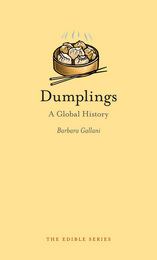
First examining the etymology of the word and examining just what makes a dumpling a dumpling, Gallani moves on to recount the many ways we have come to love this simple comfort, sometimes even offering up monuments and poetry in its honor. Including traditional recipes for readers to make at home, she shows us what makes the dumpling special in so many ways. A great resource for food and history enthusiasts alike, Dumplings reveals unique insights into this widely consumed and celebrated food.
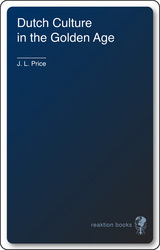
The seventeenth century is considered the Dutch Golden Age, a time when the Dutch were at the forefront of social change, economics, the sciences, and art. In Dutch Culture in the Golden Age, eminent historian J. L. Price goes beyond the standard descriptions of the cultural achievements of the Dutch during this time by placing these many achievements within their social context. Price’s central argument is that alongside the innovative tendencies in Dutch society and culture there were powerful conservative and reactionary forces at work—and that it was the tension between these contradictory impulses that gave the period its unique and powerful dynamic.
Dutch Culture in the Golden Age is distinctive in its broad scope, examing art, literature, religion, political ideology, theology, and scientific and intellectual trends, while also attending to the high and popular culture of the times. Price’s new interpretation of Dutch history places an emphasis on the paradox of the Dutch resistance to change as well as their general acceptance of innovation.
This comprehensive look at the Dutch Golden Age provides a fascinating new way to understand Dutch culture at the height of its historic and global influence.

Thomas, a museum curator, delves deeply into the rich design history of the Netherlands, beginning with the historical roots of Dutch crafts education and the moral and social ideals of modernism that became central to the nation’s cultural dialogue. Touching upon such issues as the emergence of the professional industrial designer, public work initiatives, debates about design as art, and the provocative notion of “anti-design,” Thomas argues that though Dutch design from the beginning has been driven by aims of functionality, simplicity, and affordability, it has also embraced luxury and exclusivity. The book also discusses the role played by leading Dutch designers and their works, including Wim Crouwel, Marcel Wanders, and the design collective Droog Design.
An unprecedented, detailed history, Dutch Design Culture is a critical primer on one of the leading national design movements today.

Dylan Thomas—author of some of the century’s greatest poetry, stories, and film scripts as well as one of the greatest radio features ever broadcast, Under Milk Wood—is often characterized as self-indulgent. This concise and up-to-date biography challenges this depiction with a fresh portrait of the artist as a consummate professional. John Goodby and Chris Wigginton locate the source of Thomas’s daring and inventive style in the poet’s Anglo-Welsh origins as well as his historical, cultural, and social contexts: the Great Depression and 1930s literary London, surrealism, World War II, and Cold War popular culture. The result is a revealing and fresh introduction to the life and work of this important Welsh writer.
READERS
Browse our collection.
PUBLISHERS
See BiblioVault's publisher services.
STUDENT SERVICES
Files for college accessibility offices.
UChicago Accessibility Resources
home | accessibility | search | about | contact us
BiblioVault ® 2001 - 2024
The University of Chicago Press









